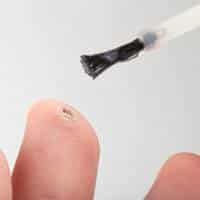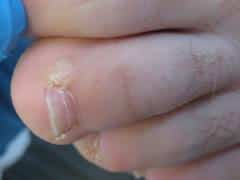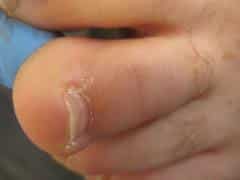
WHAT ARE WARTS AND HOW DO I GET THEM?
Warts are caused by the human papilloma virus (HPV), of which there are over 100 types. They commonly occur on sites of trauma and are spread by direct contact or by autoinoculation (scratching a wart and transferring the viral particles to another area of your body). It can take 12 months from the time of the viral infection to the time the wart appears.
WHAT KIND OF WART DO I HAVE?
There are several types of warts. The most common are as follows:

COMMON WART (VERRUCA VULGARIS):
Dome shaped grayish rough growths. These are usually found in fingers toes and knees.
PLANTAR WARTS (VERRUCA PLANTARIS):
Rough bumps or plaques on the bottom of the feet. These may be very painful and extremely difficult to treat.
FLAT WARTS (VERRUCA PLANA):
Very small, numerous flesh colored bumps. These usually appear on the face, hands or shins.
GENITAL WARTS (CONDYLOMATA ACUMINATE):
These are considered an STD and can easily be spread to sexual partners. Infection with HPV in genitalia predisposes one to penile or cervical cancer.
HOW CAN I GET RID OF MY WARTS?
There are many treatment options available, but you must be patient. It generally takes multiple courses of treatment to fully eradicate warts. The following are the more common methods of getting rid of warts:
- Do nothing. Over ½ of all warts will spontaneously regress within 2 years. Left untreated though, they have the potential to spread to other areas of the body.
- Occlusion with duct tape. This is one of those tried and true old wives tales. As odd as it sounds, covering the wart with duct tape has been shown to get rid of some warts. You must leave the duct tape in place at all times, and change it every few days.


resolved.
- Over the counter salicylic acid preparations. This is a topically applied medication that can be done at home. A lot of times it is not enough to take care of the wart, but it is a great treatment to do in between the treatments at the doctor’s office.
- Liquid Nitrogen. This is the most commonly used way to treat, or “freeze” warts. Your wart will blister and peel. You should have this done every 2-3 weeks until the wart is gone.
- Cantharidin, podophyllin, 5-FU and bleomycin are all treatment options that are used in the dermatologist office.
- Imiquimod is a topically applied prescription strength medication used to treat genital warts.
SCHEDULE YOUR WART REMOVAL APPOINTMENT TODAY!
For more information on warts, contact us today by calling (818) 842-8000 or reaching out online. Our practice has 7 convenient locations in Burbank, West Hills, Pasadena, Northridge, Santa Clarita, Glendale, and Verdugo Hills. We look forward to meeting you!
